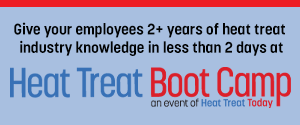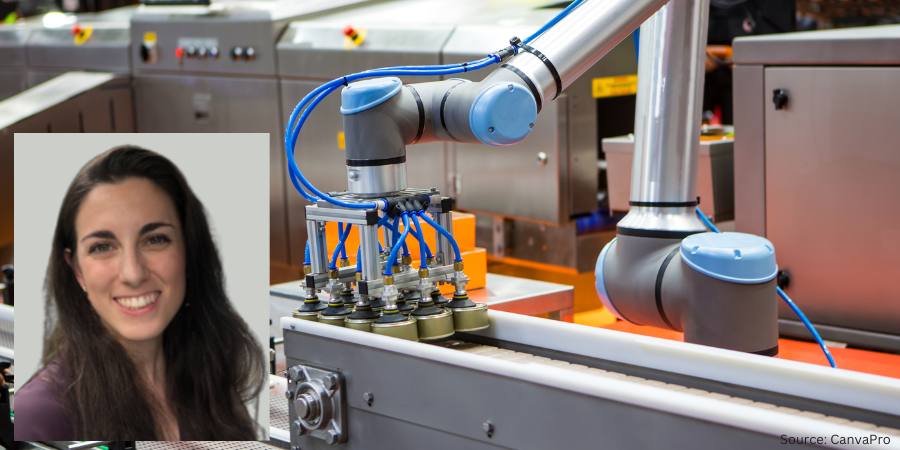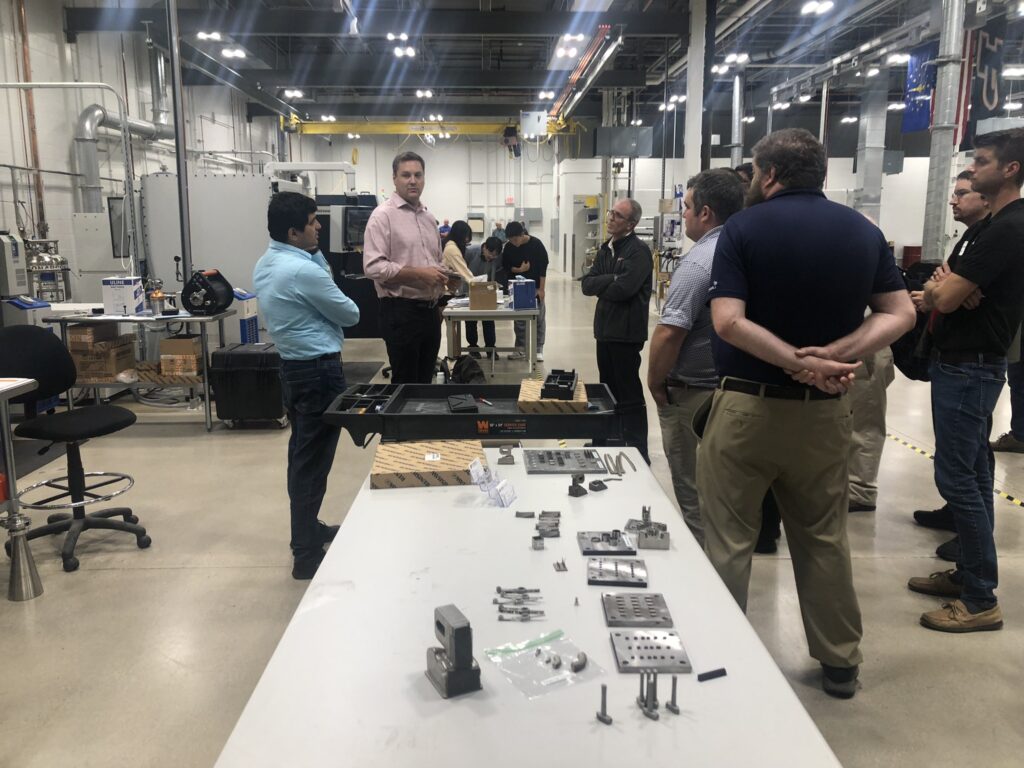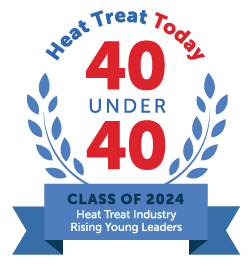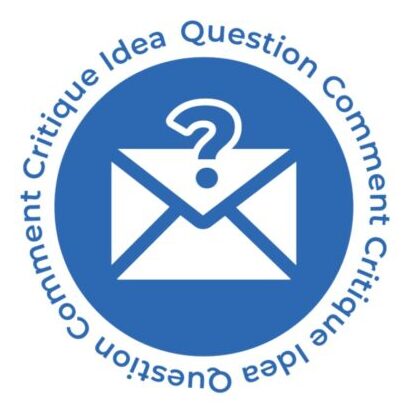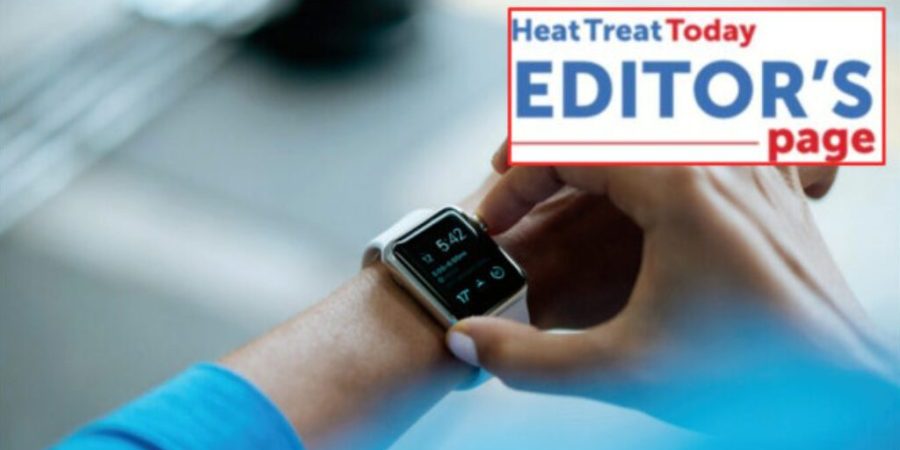Autonomous Solution for Industry
Heat Treat Today publishes twelve print magazines a year and included in each is a letter from the editor, Bethany Leone. In this installment, which first appeared in the December 2024 Medical & Energy Heat Treat print edition, Bethany addresses the ongoing discussion about automation in industry, the data on how it affects labor, and the way forward for manufacturing and the government.
Feel free to contact Bethany at bethany@heattreattoday.com if you have a question or comment.
You can afford it.
Supervisors, you can afford to raise wages. Skilled laborers, you can afford to purchase a home.
Maybe you’ve heard these hopeful statements before? You can afford it, says economist Mark P. Mills, executive director of the National Center for Energy Analytics, by leaning on automation. Far from destroying jobs, tools like AI and robotics enhance productivity and require highly skilled laborers who, in turn, can and should be compensated. This editor’s page summarizes some of Mills’ main points and how these might be considered in the heat treat industry.
Labor Market Needs Automation
In a recent article released in City Journal, the economist draws attention to what he sees as a new norm for the labor market: the successful bargaining for higher wages by the Longshoremen’s Association. The result of the union’s strike means a starting salary of $80k and a mid-career salary of $150k. Mills terms this “The Great Inversion,” where we see salaries for the trades supersede 90% of salaries for college graduates.
His argument that this is the new norm rests on three points. The first is that population has been in decline; this is exacerbated in the trades by the fact that the average age for skilled tradesmen is older than the average age across U.S. manufacturing.
Secondly, though there is a trend of young workers choosing a career in the trades, not enough would fill the generational chasm that is opening as the older generation leaves the workplace. This means there is still a demand for skilled labor.
Thirdly, industrial manufacturing creates consumable goods, for which there is no end to want, unlike in food and agriculture where there is a limit of consumption. As people grow wealthier, they can afford more “wants” — even if it’s going out to eat at restaurants where iPads automate server-kitchen communications.
Even with the population decline, individuals continue to gain wealth and want to spend it, Mills explains. In this situation, particularly where we have efforts and interests in America restoring industrial productivity, the argument is that automation will allow companies to keep up with the demand for consumable goods while filling the labor gap. This result means a need for upskilling workers to work with robotics, automation software, and AI on the manufacturing floor.
Automation in Heat Treat
In the heat treat industry, I’ve heard several perspectives on this topic. Robotics and automation don’t take away jobs, some claim; they only improve labor market jobs that are there. At another’s operations, the installation of an automated piece of instrumentation didn’t result in any immediate layoff, but did result in the company not having to train an operator to fill a position since that position was no longer available.
The fact is that the pro-automation side relies on addressing situations where there is a lack in able workers in the labor market. This demonstrates that jobs are being filled by automation.
Turning to employment opportunity, it is hard to argue with Mills’ outlook that automation in jobs increases wages and profits. He supports this claim saying, “data show that, over the last half of the twentieth century, even as manufacturing productivity rose (that is, fewer labor-hours per output), the U.S. manufacturing workforce remained surprisingly unchanged and really started to shrink only when an increasing share of manufactured goods were imported — namely, when the production and labor were exported.” Interestingly, while he acknowledges the role of companies in offshoring goods in the last century, he puts focus on the difficult environment for businesses in meeting the government regulations in America. Therefore, he offers three steps forward addressed at government (in)action:
- The U.S. government must look for ways to make the country more amenable to industrial expansion that go beyond subsidies with caveated use.
- Policymakers must avoid intervening in the economy when a system isn’t broken. (Here, Mills addresses cost and reliability issues tied to state and federal energy policies.)
- The trifecta of policymakers, unions, and manufacturers need to welcome advances in automation.
Mills points out that in order for automation to be successful, skilled laborers need to welcome it and help it, emphasizing that, like the Longshoremen’s Union strike, automation allows for wage increase.
My question to you in the heat treat industry is: What is your job function in the industry? How have you benefited from automation (AI, robotics, digitalization) initiatives in the industry? What concerns — or hopes! — do you see that have yet to be addressed? Write to me. And if any article on digitalization in this magazine strikes you, I would love to hear that, too.
References
Mills, Mark P. “The Longshoremen’s Strike and the Great Inversion.” City Journal, October 8, 2024. https://www.city-journal.org/article/the-longshoremens-strike-and-the-great-inversion.
Contact Bethany at bethany@heattreattoday.com.
Find Heat Treating Products And Services When You Search On Heat Treat Buyers Guide.Com
Autonomous Solution for Industry Read More »


